Year round lawncare – the what, when and how.
Let’s start our programme of year round lawn care in January.
January
Get the year off to a good start by servicing your lawnmower. During the winter season, unless we’re treated to some very mild weather, you won’t need your mower for a few weeks. So take the opportunity to make sure it’s in tip-top condition. Your top priority is to clean and sharpen the blades.
Staying on the subject of winter maintenance – your lawn edging tools would probably benefit from a little bit of TLC too. Sharpening the blades and oiling any joints will make them much easier to use.
If you’re not mechanically-minded, most garden machinery dealers have experts on hand to service your mower for you.
Now is the time to fulfil any lawn repairs for early spring. If you need help with aerating or scarifying, talk to your lawn care professional and get booked in before the rush.
In mild weather, there’s no reason why you can’t do a bit of hollow-tine aeration in January. It will certainly help with drainage. Use your judgement though – some winter maintenance jobs are best left until the soil warms up a little.
Keep toys and debris off the lawn as much as possible during winter and definitely don’t walk on it if it’s white with frost.
February
As the weather warms up it’s time to get ready to perform any repairs. Provided the ground isn’t frozen, it’s OK to lay new turf in February. You can also order supplies like spring/summer lawn feed and grass seed.
Towards the end of the month, you may be able to give your lawn a light trim with the lawnmower. Don’t go too mad at this stage.
You could trim and shape the edges too. You’d be amazed at the difference it makes to the whole garden.
March
Mowing starts in earnest this month. Growth will begin to speed up so apply a spring/summer feed early in the month to make sure the plants have enough nutrients to support them. Follow the manufacturers’ instructions and make a note on the calendar of when the next feed is due.
Here’s what to feed and why.
Right now, my lawn looks the saddest it ever has. The grass is a rather sickly shade of yellow. The growth is all uneven and the edges are raggedy.
Winter is hard on lawns. From autumn through to mid-February it can be mild but very, very wet. And then, just as the days start to get longer and the plants would expect the soil to start warming up, it starts to get colder again.
A spring lawn feed is essential after the winter. It will put the colour and the vigour back into the lawn and make the whole garden look so much more alive.
But you know all that.
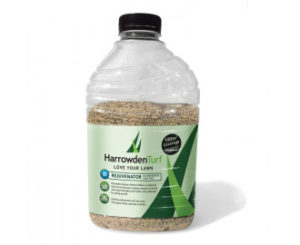 |
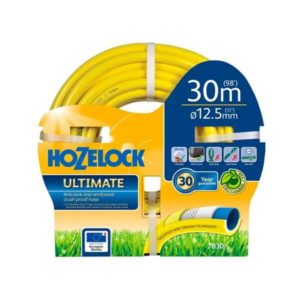 |
|
 |
 |
April , May – What to do?
Gradually reduce the height of your mowing blades. For a utility lawn, aim for a height of about 2.5cm
By now, the plants will have taken up most of the lawn feed you applied in March. Check the manufacturers’ recommendations and reapply if necessary.
Keep an eye out for weeds and treat with a selective herbicide if necessary. Personally, I’m not a fan of chemicals and prefer to dig out any offenders – but sometimes that’s just not practical.
Don’t forget to trim the edges of your lawn on a regular basis.
I’m hoping that the weather has finally turned and we’re going to see some warmer days. Longer daylight hours plus higher soil temperatures plus plenty of soil moisture will mean rapid growth on your lawn. Not just the grass blades but the roots too.
Now before you put your head in your hands and groan at the prospect of more mowing, just think how good your lawn will look once it’s shed its winter jacket.
In order to support healthy growth, your lawn needs three major “food” groups.
Nitrogen
Nitrogen molecules are an important part of proteins. In a plant, proteins are very important. And there are lots of different types. Some are vital for the structure of the plant. They make the cells of roots and leaves so that the plant can harvest nutrients from the air and the soil. Proteins also make the growth hormones that make leaves grow up and roots grow down. If the plant lacks nitrogen it will be pale, floppy and prone to disease.
Phosphorus
One of the biggest limiting factors to plant productivity is a lack of phosphorous. It is used by the plant to make DNA (remember each plant cell has DNA it it), it is an important part of the cell walls. It also gets used for general metabolism, photosynthesis and respiration. You’re probably more familiar with phosphorus as a major component of tomato feed. It’s vital for flowering, fruiting and root growth.
Potassium
Nitrogen and Phosphorus actually become part of the plant structure – they’re like building blocks. Potassium though has a different role. Potassium controls many of the chemical reactions within a plant that decide how it reacts to its surroundings and how it grows. I suppose an analogy would be the oil in a car engine. It’s not part of the car but without it, you’d be in a big muddle.
Every plant leaf has little tiny holes in its surface called stomata. The stomata allow the leaves to breathe but they also let water escape from the leaves in hot weather. Normally, the plant can close its stomata to prevent wilting. Without potassium, the stomata react very slowly and so the plant suffers in dry weather. Plants also need plenty of potassium in the roots so that they can draw water in from the soil. Again – lack of potassium leads to dehydration.
When you are choosing a lawn feed for spring and summer use, you must be sure that it contains all three of those components. Nitrogen, Phosphorus and Potassium. You may see them written as NPK.
To get the very best value from your lawn feed
To make sure that every granule of your lawn feed gets taken up by your lawn scarify and aerate your lawn in early spring. That means that the lawn feed can easily be taken down to the roots where it is needed.
Scarifying your lawn in spring will get rid of the detritus that slows nutrient absorption. I wouldn’t recommend using a rake though – not unless you have a very small lawn or a lot of spare time. Either hire a scarifying machine or ask a specialist lawn care company for help.
Apply your lawn feed exactly as the manufacturer suggests and don’t forget the follow-up feed – usually 8-10 weeks after the first application.
Granular lawn feeds like our own Vivid Green Spring Summer Feed, must be watered in. If not, there is a risk of the grass blades being scorched. I always wait until it looks like rain before I put my lawn feed on – that way Mother Nature usually waters it in for me. If your time is not as flexible as mine, use a hosepipe or sprinkler.
Further Reading
Controlling moss and weeds in your lawn – hints and tips
The summer is the time to enjoy your garden so less to do and more time to relax.
Hopefully, you’ll be getting plenty of usage from your lawn. Remember to keep moving furniture, toys, rugs etc around so that they don’t damage the grass.
Keep on with the mowing and remember to do it little and often. Letting the grass grow long and then scalping it is a recipe for disease and disaster.
If your lawn is due a feed, try to apply fertiliser just before the rain. It’s important that the granules are watered in otherwise they will scorch the grass. No rain? Unroll your hosepipe and just dampen the lawn enough to dissolve the fertiliser particles.
July
In July your lawn will start to lose its colour as the soil dries and rainfall is short. For an established lawn that’s OK. Don’t worry about it, nature knows how to manage these things. For a young lawn though, especially a newly turfed one, drought is bad. Use your common sense and water it sensibly.
August
High summer and growth will most likely slow down for a while. Lift the mower blades a little if you can. Longer grass copes better with drought and with all the wear and tear from parties and barbecues.
Until the autumn…..
As we gradually move into autumn lawn maintenance, it is time to start considering how to protect the health of the grass through winter. Weather permitting, your grass will start to green up a little. As such, autumn is a good time to scarify your lawn, especially if there is moss present.
Scarification clears dead grass and debris from the base of the plants and allows water to filter through the sward into the soil. It stimulates the grass plants to the tiller. “Tillering” is the production of new shoots from the base of the plant.
Autumn is an ideal time of year to pay attention to your lawn. Damage done during the summer may have left it looking lacklustre. But it needs to be strong enough to cope with the onslaught of winter. So you have a perfect window to fix your lawn and get it in good shape for the harsh months ahead.
| Lawn Thatch | Lawn Seed | Top Dressing |
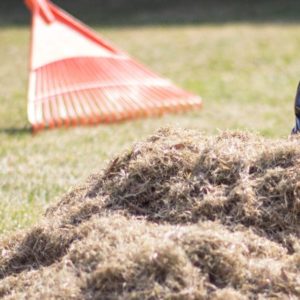 |
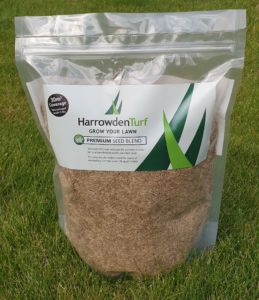 |
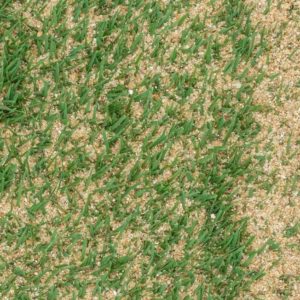 |
 |
Sweep up leaves.
As autumn gets underway, leaves fall off the trees and may start to accumulate on your lawn. Get into the habit of regularly sweeping the leaves away and placing them in plastic bags to create leaf mould. Leaves left on the grass can cause damage to the lawn and may even spread disease.
Over-seeding
If your turf is looking patchy, thin or worn, autumn is a good time to add some much-needed density to the surface. Sowing grass seeds can help to make your lawn look lush again, so that it retains its good looks over the winter months.
Autumn feed
Continue to feed your lawn over autumn, so that it is strong and healthy enough to withstand winter weather. For the best results, use a high quality lawn feed that is specially formulated for use at this time of year, like Vivid Green or Rejuvenator Fertiliser. An autumn lawn feed is high in potash and phosphates, which can help to protect the lawn from frost damage over the winter months.
Top dressing
By the autumn, soil can be low in nutrients and look in poor condition. By adding a top dressing, the condition of the soil will be improved and strong root growth promoted. Make sure to properly rake the top dressing into your turf for best results.
Autumn Mowing Regime
The experts say that growth will begin to slow this month and you’ll need to mow less often. I’ve not noticed that happening in my garden and I’m still out there every 4-5 days. Mow your lawn when it needs it. If you’re not planning on scarifying or topdressing, start to increase the cutting height a little. Longer grass is more robust in a harsh winter.
Feeding Your Lawn in Autumn
It’s time to switch to an autumn/winter lawn feed. If you’re scarifying, do that before you feed and the extra nutrients will help the grasses flourish afterwards.
Turfonline Rejuvenator has exactly the right balance of nutrients to encourage strong root growth. At the same time, it won’t encourage the blades of grass to become so lush that they’re susceptible to damage by frost or disease.
Having said that scarification can turn an ordinary (or a poor) lawn into something beautiful. It takes out the dead grass and the moss that accumulate on top of the soil. That allows water to percolate into the lawn and drain away quicker. It also gives the roots a breath of fresh air.
Greenkeepers will scarify several times a year. For a lawn though, once a year should be enough. Autumn is the perfect time of year because the grass can recover overwinter and really spring into life the following year.
When it’s my turn to scarify, I hire a machine to do it. I’m tempted this year to hire a lawn care company to help. They’ve got the equipment, they’re in better physical shape than me and they do all the tidying afterwards while I provide tea and cakes.
Aeration
Hollow tine aeration will help with drainage. But don’t do it if the weather is likely to be hot and dry in the next few weeks. There’s a danger that the lawn could dry out.
If you’re bothered by lumps and bumps in the surface of your lawn, it’s a good idea to follow aeration by topdressing. Topdressing involves spreading a thin layer of nutritious but well-draining soil on the surface of the lawn. It will level the surface and improve the soil beneath the lawn.
Watch out For Lawn Diseases
Be on the alert for disease. There’s nothing you can do to prevent it other than keeping your mower blades sharp, not letting the lawn get too long (or too short) and ensuring the plants are well fed. A healthy lawn is better at resisting disease in the same way that a healthy child doesn’t get as many winter colds.
If you spot the signs of Fusarium Patch Disease, frost will normally kill the fungus that causes it. However, you can avoid spreading it by disinfecting your lawn mower blades and trying not to walk through infected patches. If you’re really worried – consult your local lawn-care company. They may have a chemical treatment for it.
 |
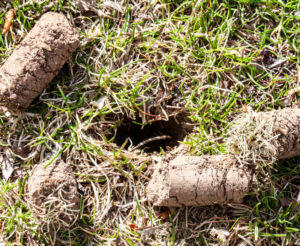 |
 |
|
Fusarium Patch Disease |
Hollow Tine Aeration Plugs | Toadstools |
Toadstools in Your Lawn?
In essence, don’t panic, toadstools in the lawn are nearly always harmless. Don’t fry them up for breakfast though unless they’ve been identified by an expert.
Autumn brings the perfect weather conditions for sowing grass seed or laying turf. So now is the time to repair bald bits and replace tired lawns.
October and into winter
All is quiet on the lawncare front. It’s not too late for aerating and it’s certainly not too late to apply winter feed if you haven’t done it yet.
Keep off the lawn when the grass is frozen. Remember to take all the summer toys, furniture and paraphernalia off the lawn.
You may or may not need to mow. Use your judgement. If you do mow, the blades must be really sharp. This is not the time of year to risk tearing at the leaves, if you can’t offer a clean cut, don’t do it at all.
Winter lawn care begins in December
Where are your priorities going to lie this month? Good lawn care that will last till next spring or Christmassy ornaments? Of course the ornaments, but ensure you pay equal attention and care into the health of your lawn over winter.
Winter usually feels like the time when lawn care takes a back seat. With luck it will not be necessary until the spring. It’s too late to feed and nothing will germinate once the temperatures start to drop.
But there are still ways to help your lawn make it through the winter and to make sure it’s as good as it can be in the spring.
Frost and snow can look fantastic but are not always great for lawn care. Try not to walk on your lawn during cold weather. If you are setting out lots of garden ornaments and Christmas decorations if you can keep them to the edges so much the better.
Leaves seem innocuous but if left on a lawn they will kill the grass and leave bare patches come the spring. The remedy is relatively easy. It either involves some brisk raking or a few minutes with a leaf blower. The leaves will make leaf mould or compost and can be used elsewhere in the garden later in the new year. Putting them on bare soil will encourage insects and wildlife as well help to put nutrients back into the soil.
Winter
The real thing to avoid over the winter is walking on your lawn. As it will turn into a muddy mess. If the weather is wet – and it usually is in the UK in the winter – there is a good chance the ground will be waterlogged. Particularly if the soil is anything but sand. Heavy use, or even any use, can quickly break down the soil structure and the soil will become compacted making it hard for grass to survive, never mind thrive.
More rain means more moisture which in turn means a greater chance of moss. Moss loves the damp, shady conditions that pretty much define a British winter. There are moss control treatments on the market – and shade tolerant turf is always a good idea. Whilst maintaining your feed regime into the autumn will also help.
Walking on a frosty, frozen lawn will damage the lawn so please stay clear if you can. Snow itself won’t hurt the lawn so feel free to just leave it to thaw and all will be well.
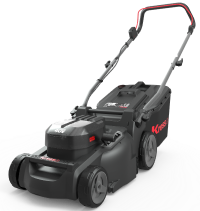 |
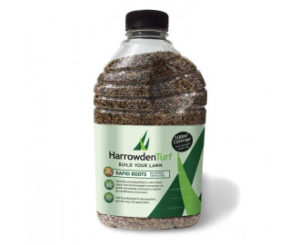 |
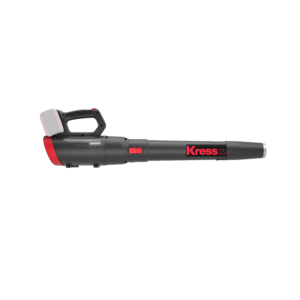 |
 |
 |
 |
The other great opportunity the winter affords is to take the time to reflect and plan. What worked well this year? What have you still got left to do?
Next year, do you need to employ a lawn care professional who can scarify, aerate, feed, weed and trim while you get on with the things you enjoy?
The cost of lawncare
If you take notice of all the adverts for lawn care products, you could spend a small fortune on maintaining the perfect lawn. Here’s how to make some savvy savings.
If you invest time in these: –
- Mowing little and often.
- Lawnmower servicing.
- Applying good quality lawn feed.
- Aerating at least once a year.
- Scarifying once a year
You won’t need to buy these.
- Chemical weed killers.
- Moss control.
- New turf.
- Grass seed.
- Disease control.
Mowing regularly will keep weeds away and reduce costs.
Weeds will invade your lawn wherever they find a weak patch or a bald spot. Mowing little and often will help to keep the sward thick, healthy and weed free. That way you won’t need to buy chemical weed killers or fancy tools to dig out the imposters.
Don’t let the grass grow under your feet.
We’ve all done it. Gone on holiday, got distracted by domestic duties or just plain not got round to mowing the lawn. When the lawn starts to look straggly and shaggy it’s only natural to want to get out there and cut it really short quickly. That’s the worst thing you could ever do.
Letting grass get long and then scalping it shocks the plants and weakens them. Weak plants are more susceptible to drought and disease. Before you know it, your lawn gets thin and it’s easy for weeds to invade.
Lowering the cost of lawncare for a family lawn or one that contains dwarf ryegrasses means trying to keep it between 3 and 5 cm high. I like to lean towards 5cm. I know that sounds long but I do find that it stays greener all year round that way.
Mow little and often….
That might mean twice a week during spring and early summer. I find a mowing session that removes half a centimetre or so of grass is so much quicker and easier than a major chop. I’m not emptying the grass box nearly so often.
Keep your lawnmower blades sharp.
I can’t stress that one enough. Blunt blades rip at the grass leaving open wounds that let water stores out and diseases in.
Feed regularly and care for the soil.
When you mow the grass, you’re taking away all the nutrients that the plants have drawn up from the soil and stored in the leaves. Eventually soil nutrients are depleted and the plants become malnourished. We think of grass as being a really resilient plant – and it is – to an extent. But every living thing needs good nutrients if it is to thrive.
Feeding your lawn means the difference between thriving and surviving.
There’s a big difference between thriving and surviving. When your lawn is thriving, it will have a dense sward of healthy plants. The colour will be deep green and even. Rainwater will soak straight into it. You’ll be proud and your neighbours will be envious. When a lawn is surviving the plants are clumpy, you can see the soil between them, the leaves are pale and the drainage might be poor.
It’s more cost-effective to apply a good quality lawn feed 3-4 times a year than it is to keep reseeding or re-turfing.
Scarifying and Aerating keeps the soil healthy.
Healthy soil makes for a robust lawn that is easy to care for. Scarifying and aerating may seem like hard work but they’re so important. What they’re doing is allowing air to reach the roots of your grass plants. Without air, roots cannot thrive. The lawn will look sad for a week or so after the work has been done but my goodness, within a month you’ll be so glad you made the effort.
Earthworms
Truth be told, we’d be in a muddle if there were no earthworms. They help break down dead plant matter into lovely nutrient rich, fine-textured soil. But I suspect there are some lawn-lovers out there who are gnashing their teeth at the sight of worm casts all over their beautifully manicured lawns.
What can be done if earthworms are defacing your lawn?
Monty Don gave some good advice on the BBC Gardeners World TV programme. It’s worth trying to catch it on the i-player if you didn’t see it.
He advised gardeners to let the worm casts dry out and then disperse them with a broom. Worm casts are a fabulously rich source of plant food and are far too good to waste.
The easy way to cope with worm casts.
My preferred approach is to turn a blind eye. Worm casts only really appear when the weather is warm and the water table is high. So, we’re talking mainly in autumn.
My own lawn is a family lawn. Used by two lively grandchildren and three dogs. It is occasionally grazed by my chickens. So, it needs to be tough. To keep my lawn strong through the winter I tend to raise the height of the lawnmower blades and let the grass grow a little longer – maybe 2-3 inches. It still looks good, the grass copes well with winter weather. Keeping the grass longer means I can’t see any worm casts because they’re hidden.
Initially, I try hard to keep raking up the leaves as they fall on to the lawn (excellent exercise!). Then, I add some the leaves to the ground beneath my shrubbery in the hope that the worms will go there to do their thing. At the very least the leaves make lovely mulch to supress weeds and help the soil retain water in spring and summer.
| Earthworms | Chafer Grubs | Leatherjackets |
 |
 |
 |
Persuading worms to move on
If you have a fine lawn or a bowling green to care for, worms will be more of a problem for you. Ideally, you need a gentle way of dissuading them from working on your patch.
There are no chemicals available that will kill earthworms in your lawn. There is however a product on the market that will irritate the worms’ skin and encourage them to move somewhere else.
That product is called Castclear – it’s worth looking into. Castclear should be applied in late September and early October and is best applied by a lawncare professional.
Leatherjackets – Why is my lawn going bald?
These could be the culprits…. Leatherjackets are unattractive little creatures that can cause damage to your lawn.
Leatherjackets are the larvae stage of crane flies (or daddy-longlegs as they often known). Whilst a daddy-longlegs can be irritating enough flying aimlessly around a light fitting on a late summer’s evening, the damage their offspring do to lawns and turf can be far more vexing.
Life cycle of a daddy longlegs
Unbeknown to many, most of a crane fly’s life is spent underground. They hatch in September and October and spend all their time underground. In late May and June, the larvae pupate. This is the beginning of the process of becoming the insects we see flying around. Once this transformation is complete, they only live around two weeks during which time the crane fly’s main aim is to mate and lay more eggs in grass.
Lawncare tips – Leatherjackets –
How does the daddy longlegs cause problems for turf growers and lawn lovers?
The problem with this whole process for turf growers and those of us with lawns is that in the months between hatching and pupating, the main activity of the larvae is eating grass roots. This doesn’t do the plants any good and, if the numbers of leatherjackets are significant enough, will result in areas of dead, brown turf.
Signs of leatherjacket damage
Of course, some turf diseases can result in similar looking symptoms but it’s fairly easy to see whether leatherjackets are the cause:
Some birds, particularly, crows and magpies, enjoy dining on the leatherjackets, you may notice more such birds on the turf. The ground may also be marked with small holes where they have plunged their beaks into the soil to retrieve the grubs.
Look at the top layers of soil, particularly at the edges of the dead areas, where you will probably come across the leatherjackets. They are up to 3cm long with large, round, grey/brown bodies, they’re distinctive.
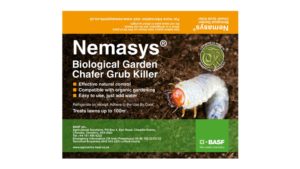 |
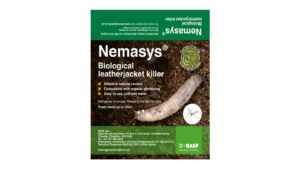 |
 |
 |
 |
 |
Treatment for leatherjackets
Above all else, leatherjackets are particularly devastating for turf because they’re so difficult to control. The only home treatments for leatherjackets are nematodes which are watered into the soil. Unfortunately, these are only effective if the soil is warm enough. In the UK at least, such temperatures rarely coincide with the times of year in which leatherjackets are active.
This year could see leatherjackets become more of a problem for turf growers and gardeners. After wet autumns/winters, numbers of leatherjackets are particularly high since these are the ideal conditions for the crane fly eggs to hatch.
Worse, at the end of this month, changes to regulations will mean that the last chemical treatment effective against leatherjackets will no longer be available.
All is not lost, however. Though difficult to eradicate one can still use nematodes to keep leatherjacket numbers low. Apply them while temperatures are still high enough in early autumn as the larvae hatch.
What about rolling my lawn?
We often see groundsmen and greenkeepers rolling green velvet cricket pitches, tennis courts and sports fields. But should it be something we do at home?
What does rolling a lawn actually do?
Aerating our lawns, worm casts and frosts will create an irregular lawn. Rolling is one way to correct it.
But before you begin hauling a roller around your garden, please take note of a few things. Firstly, rolling can only ever correct an irregular lawn. Secondly, a medium weight roller will only compress the top few centimetres of the soil. So if there are even moderate differences in the level of the lawn, don’t expect to fix them in this way. Top dressing (for small low areas) or completely renewing the lawn (for anything more severe) would both be much better ideas.
Third consideration is the soil type. Free draining sandy soils will withstand rolling time and again. Their structure makes compaction less of a problem, but rolling clay soil even once (particularly if wet) could cause the soil to compact. This will prevent the grass from growing well, inhibiting drainage and require a lot of time and effort to put right. This could be a problem on any soil type if the roller used is too heavy or the soil too damp at the time of rolling.
Lawncare tips – when do you roll your lawn?
If, after these considerations, you think your lawn could withstand it without becoming compacted, it’s more than likely rolling is still unnecessary.
A healthy lawn’s root system is sufficient to prevent frost from heaving the soil too much. Any small irregularities are likely to be put right with the first use and mow after Spring. For clay soils, this freezing and thawing process will loosen the soil structure and rolling will only undo this.
Sports pitches and greens are rolled as they need to be very firm for play. They need a lot of maintenance – partly as a result of rolling – surely something most of us want to avoid at home.
The image of a roller on the front lawn of a grand house comes from another time. Before the grown-from-seed turf industry was established in the UK. The lack of specially grown turf varieties and greater tolerance to being rolled meant more ornamental lawns could be promoted.
So rather than going out and buying a roller, be thankful you have one thing less to do.

 Lawns For Dogs: Lawn Care Tips For Dog Owners
Lawns For Dogs: Lawn Care Tips For Dog Owners  How to care for fine turf
How to care for fine turf 

